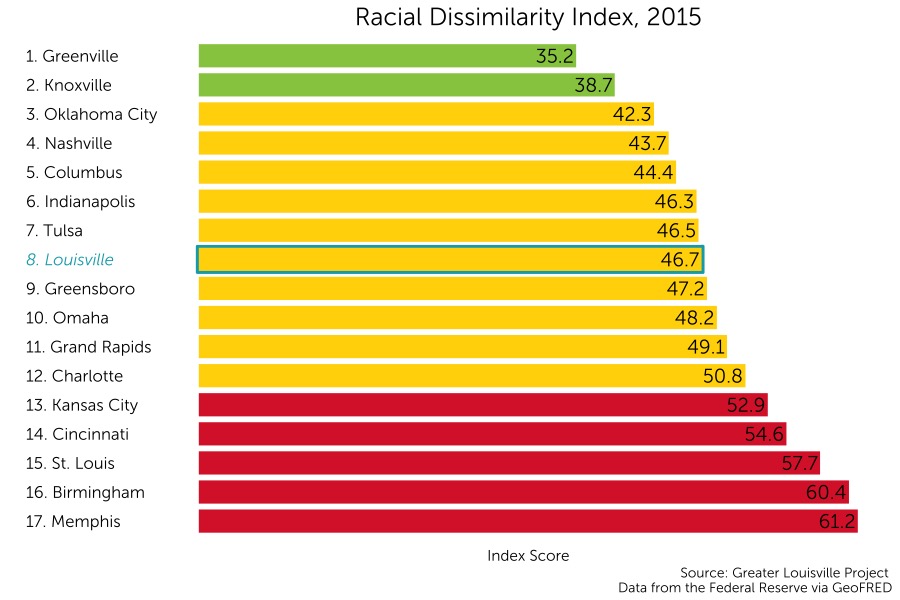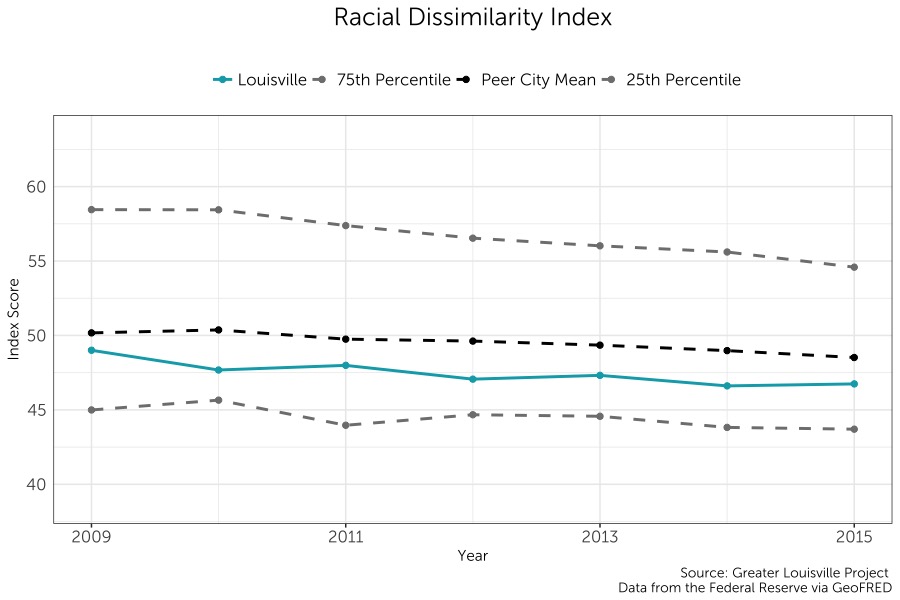Racial Geography
In order to achieve a prosperous community in which all residents can participate fully, high levels of segregation in communities should be reduced. Although complete desegregation is not necessarily a desirable outcome due to the destruction of social capital built from within communities, fostering cultural exchange and horizontal relationships will yield greater economic and social prosperity, and ultimately stronger communities.
While there are many facets of diversity that one could study when considering segregation, race is most commonly associated with the practice of segregation. The present effects of a history of segregation across geographic and racial lines damage a community’s quality of life and stunt the development of community-wide prosperity and cultural exchange.


